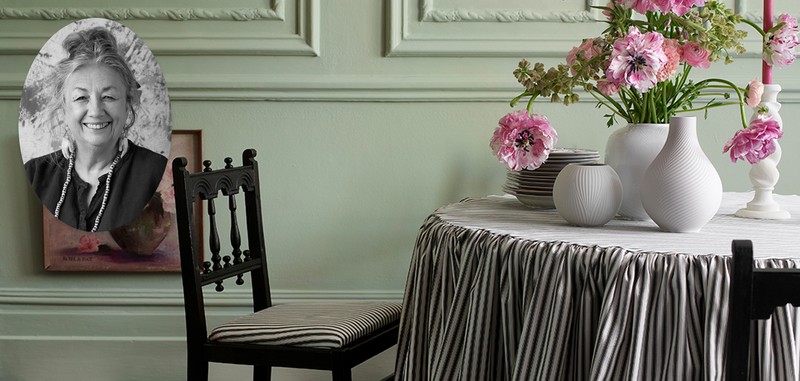
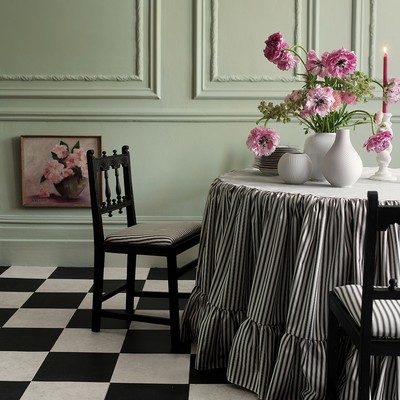
In Conversation With… Annie Sloan
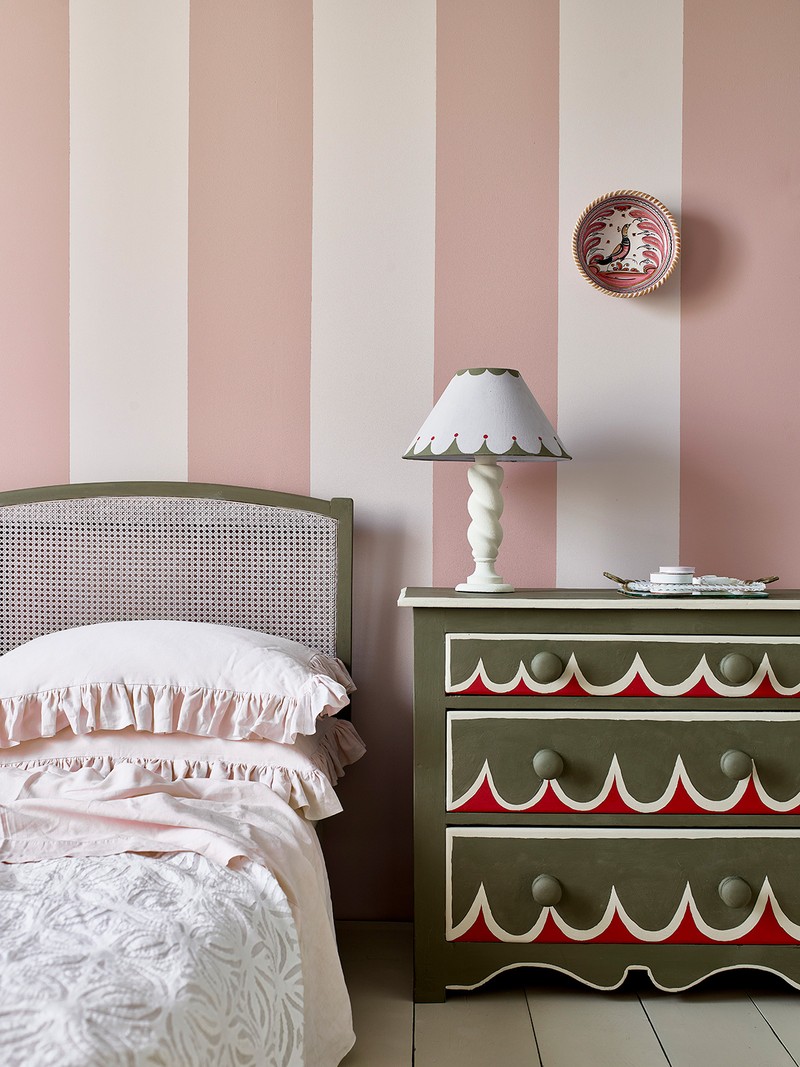
My interiors style revolves around paint and colour. There’s really not much more to it than that. I hate the word ‘eclectic’ but anyone looking round my home would think it was very personal to me. It’s a collection of pieces and objects which reflect my life over the years – it’s very intrinsic. It’s an approach I’d recommend to anyone looking to build a home.
This love of colour and paint started young. I don’t really remember any kind of lightbulb moment, but my father was very artistic, and so it was very much around me as a child. It felt like a very natural interest and one that stuck, I suppose. It’s probably this upbringing which led me to pursue more formal art training when the time came.
I think everyone interested in design should be trained in fine art. It’s a discipline that’s so all-encompassing and teaches you so much. There’s rarely a set syllabus either, so you can really design the course yourself by posing your own problems and finding ways to solve them. It might surprise people to hear there’s quite a lot of critical thinking involved.
There are many people who have influenced my style over the years. My favourites change all the time but it doesn’t matter, because the influences all come together into something you can call your own. I love finding inspiration in film – be it something by Spanish director Pedro Almodóvar or Wes Anderson. Sometimes going to an exhibition reignites my love of a certain style or palette. What’s important is to keep looking for and gathering ideas.
I spent seven years at art school. I ended up doing quite conceptual work, which hadn’t been my original passion. So, I left to pursue my interest in colour and paint with real purpose – I knew it would be better for my soul. I also didn’t like the idea of staying in the traditional art world. I’d been doing murals for a few people – which wasn’t always fun, but it was good experience – and it taught me what people needed from the paint they used. I also did lots of research into different types of paint and how different cultures around the world used it.
This research is what led me to my first book deal in the late 80s. Having learnt about all these techniques, I put together a summary for ‘The Complete Book of Decorative Paint Techniques’ and sent it off to a few publishers, one of whom snapped it up. I’ve actually published 26 books in total over the years, but I don’t think I’ll do any more. I’m enjoying doing my bookazine The Colourist much more – magazines are big business in interior design now, more so than books.
Even so, my first book is what really catapulted my career. It led to all sorts of things, teaching, more writing and it really got my name out there. I had three children at the time at home, so I had to be quite organised and disciplined when it came to juggling all these new endeavours. But I’ve always said, if you want to get something done, give it to a busy person. Plus, I was very lucky to love what I was doing – I still do.
I developed the Chalk Paint formula in 1990. Having done the research for the book, I knew about lots of people in other countries – particularly in Scandinavia – who were painting furniture with different kinds of paint, but we didn’t have anything like it here. We only had a very plastic-type paint that either came from Dulux or art shops. I wanted to find out what might go into the formula I envisioned using, so that’s what I set out to do. It started with messing around with yoghurt and pigments, but I eventually tracked down a factory in the Netherlands that could help me.
Together, we started playing with paint. One thing led to another and, after about three visits out there, we landed on the Chalk Paint formula. The colours took a little bit longer to develop. Most factories add black to their paint and I didn’t want that – it makes them harder to mix if every colour contains a bit of black; it tones everything down. I was used to art paint, which was very pure and vivid, and that’s what I wanted to replicate.
The most revolutionary thing about the Chalk Paint formula was you didn’t need to prime the furniture first. A lot of people doubted this approach – DIY enthusiast men mainly! – but this was paint you could almost slap onto furniture in the morning, wax it in the afternoon and put in back in the room ready for when the children got home from school. It was also very mess-free and didn’t require three days of work to upcycle a piece. It really got people very excited.
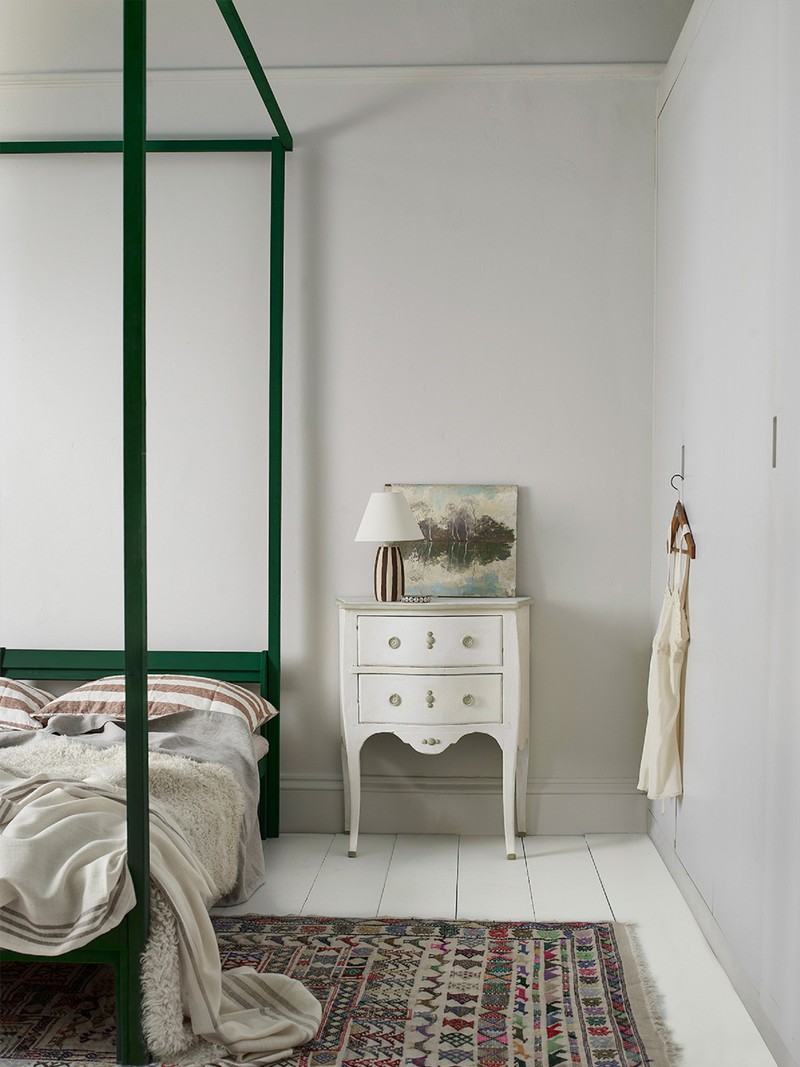
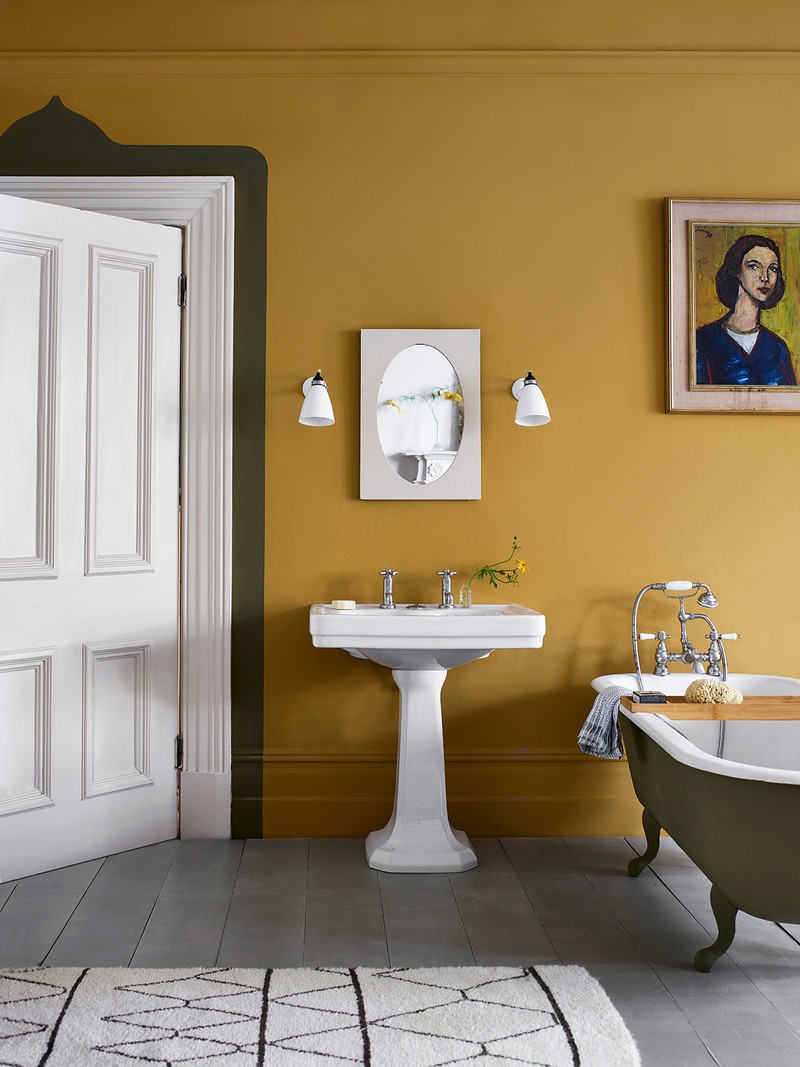
In those early days of running the business, I listened to too many people. It was a mistake I made – thinking I didn’t know what I was doing, so I’d better listen to everyone else instead. Looking back, I should have trusted my gut more. We went down lots of different routes with people who really didn’t understand what we were trying to achieve – and it slowed down our growth. Sometimes, creative people don’t think they have a head for business, but the truth is it’s possible. You just have to trust yourself.
The one piece of business advice I’d give other people now is you, more than anybody else, will know what the right thing to do is. Yes, it is sometimes worth listening to other people but, at the end of the day, only you can make a final decision. Try to find the balance between being open to suggestion and learning new things and following your own head and heart.
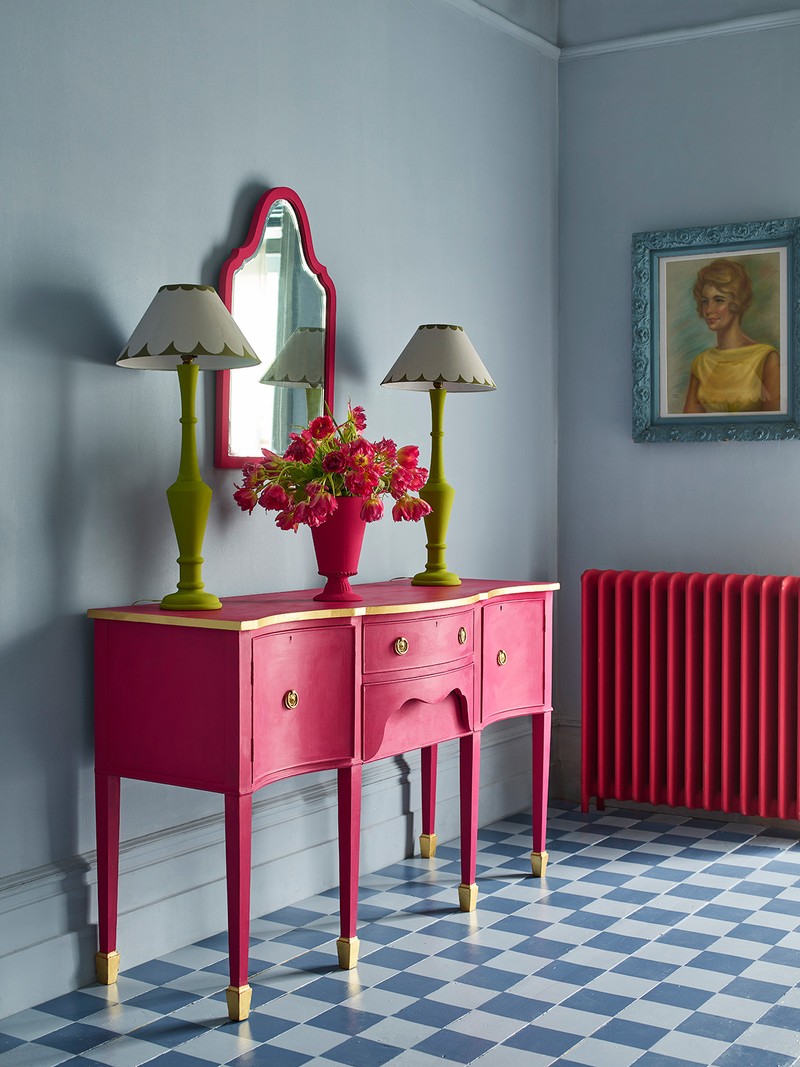
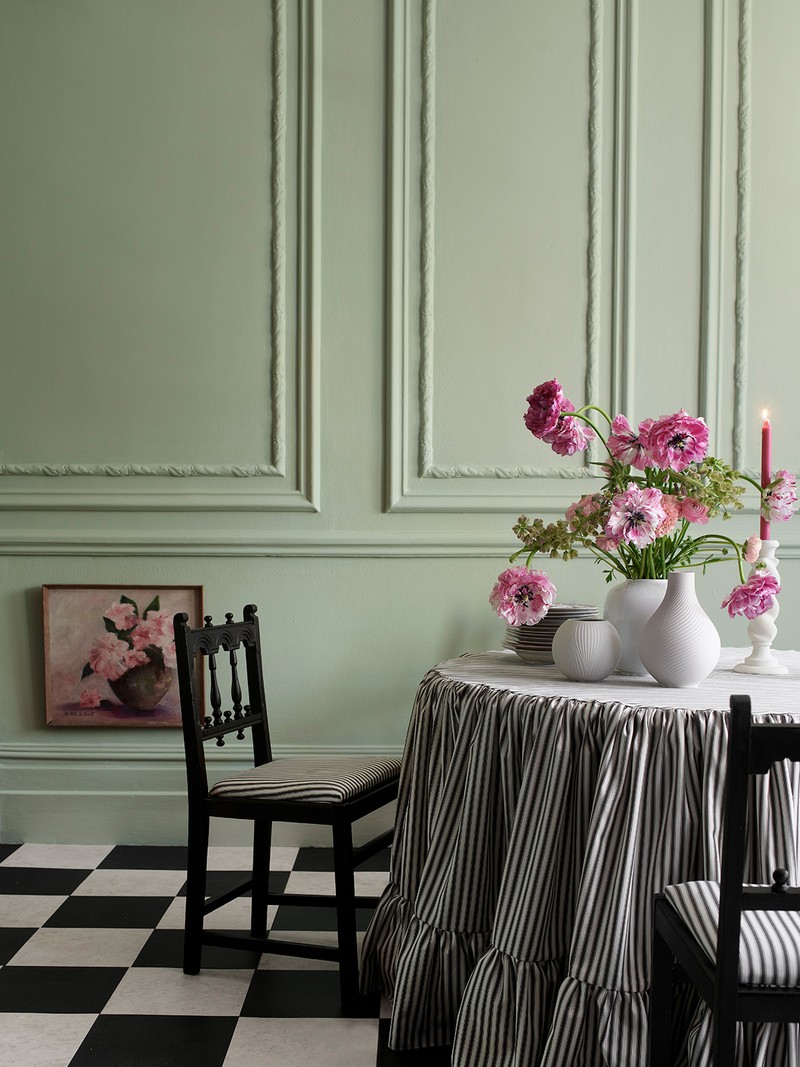
We scaled the business by always looking outward. I was born in Australia and have always described myself as a ‘child of the world’. I’m not what you’d call a parochial person, so it was always my ambition to go into Germany, the US and soon, hopefully, South America. I don’t really think in terms of global domination, but I do enjoy entering new markets. Our growth in the US has been incredible to watch.
Social media has also completely transformed our industry. We’re no longer relying on magazines to get our brand out there, and we can tell a lot of the story ourselves. Modern communications (people forget I started the business before mobile phones were even normal!) have also helped hugely, although the impact on independent stockists or retailers has been devastating.
I always hoped to sell Chalk Paint through independent stockists – ones that really understood the product. And to some extent, that was the way for a while. But as the world has become more modern and faster, fewer of these shops have survived, which is a shame. In 2000, I opened my own shop in Oxford, where we held workshops and classes, but even that has been hard to sustain. It’s sad because that’s the way you really build a community. With Instagram, I try to use the platform not just to promote our busines, but lots of small, independent names too.
The business and creative sides of my brain are constantly at war. To combat this problem, I’ve tried to look at running the business as a creative process, and I actually find it quite exciting. I wish I’d realised how fun business can be sooner. As for my creative side, this needs more compartmentalising. I need at least one or two days a week to paint and be expressive with very little interruption. I’ve got a great PA who helps me balance it all.
Having my family involved in the business has also been invaluable. I couldn’t do any of this without my husband – he’s the complete opposite of me, very level-headed and practical. He’s the one who looks after the logistics and legal side of the business – areas I find more difficult. We work really well together in that sense. He’s learnt not to comment on the things I do and vice versa. Involving my family has been one of my best moves – when my three sons were little, I got them into the shop and things, and I think it’s made them more independent.
The business continues to expand to this day – we launched Wall Paint last year and we’ve just launched Satin Paint. Over the years, I’ve learnt that a beautiful interior isn’t just about furniture, it’s also about the walls, the woodwork, the trims. It’s been great exploring all these other areas. One thing about the world speeding up means we’ve been able to pack a lot of growth into the last few years. We’ve also made our peace with selling more online and through big independent stockists, too.
I’d love to know what the future holds for the business. My husband and I share three sons: the eldest is a teacher is Brazil, then Felix is very artistic and could well be involved down the line, as might our youngest, Hugo. I don’t know that any of them will be as involved as I’ve been – it might look a little different, perhaps with them on a board advising or something like that. But who knows? I always have a vision and then it changes.
The pandemic has been an interesting time to navigate business-wise. It was difficult having all the shops closed but, of course, one upside was that people became even more interested in their homes and the environments in which they were living. It’s given rise to some wonderful collaborations and it’s also taught me a valuable lesson: you can never second-guess anything. My only hope is that the company gets bigger and better.
I can’t say I have favourite interiors brands per se, but there are some wonderful individual craftspeople out there who I always keep an eye. One is Erika Grönberg who makes some lovely, quirky pieces and another is Folk Stories. I love pottery and ceramics, and I love watching what these two are producing. They’re selling their wares online, which makes it so much easier to buy from people all over the world, which is really exciting to me.
To other women running businesses later in life I’d say find the right team of people to help you. Also, the motto I live by is: it’s not going to be perfect tomorrow so you might as well do it today. Planning is the easy part. I didn’t start my business until I was in my 40s, so it’s rarely too late. It’s surprising what you can achieve when you put your mind to it – plus, I swear I have more energy as I get older. Why? Because I’ve learnt to cut the cr*p! That’s a benefit of ageing…
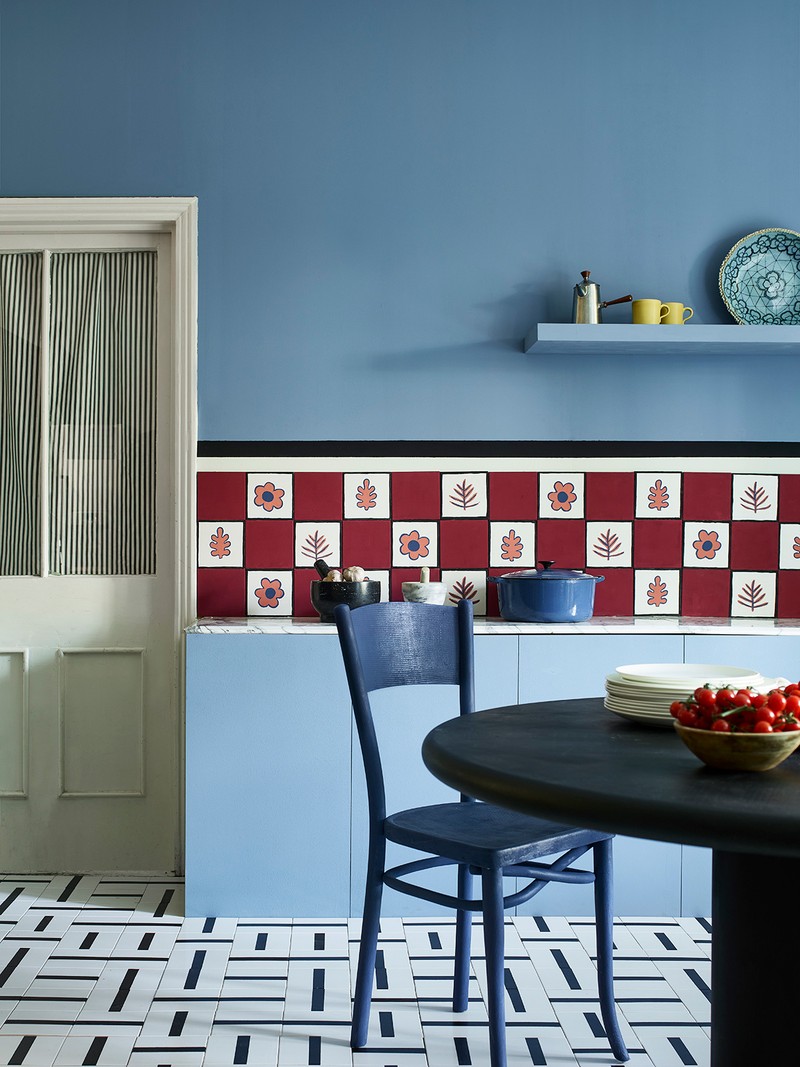
For more information visit AnnieSloan.com. Follow @AnnieSloanHome, @AnnieSloanstagram, @ChalkPaint and @House_Of_Garnett on Instagram.
DISCLAIMER: We endeavour to always credit the correct original source of every image we use. If you think a credit may be incorrect, please contact us at info@sheerluxe.com.

